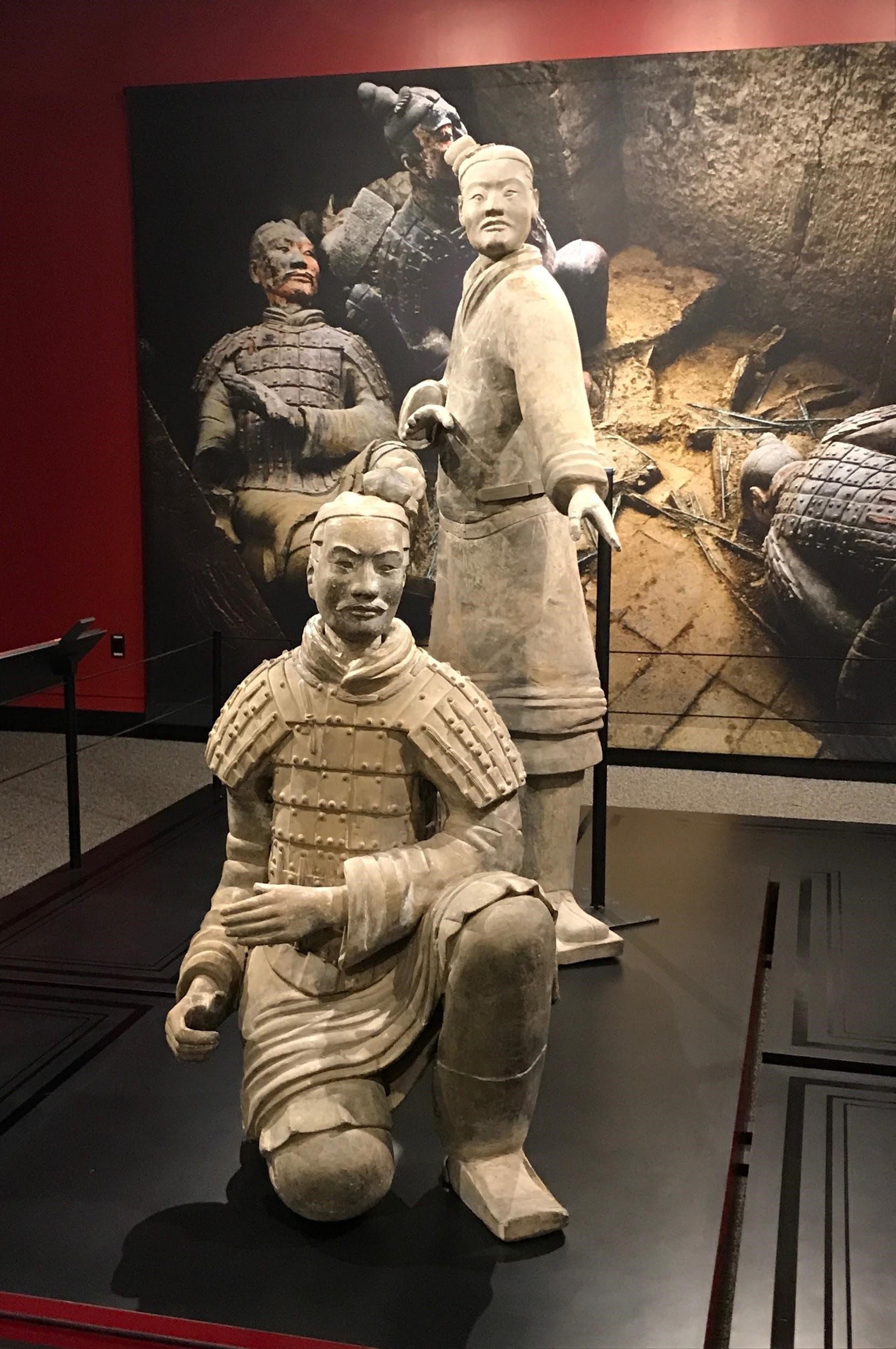by KATE HAWTHORNE, Staff Writer
You don’t need a transcontinental plane ticket to see some of China’s greatest archaeological treasures — they’re only a SEPTA ride away. The Franklin Institute has opened an exhibit featuring terracotta warriors, a colossal collection of life-size clay soldiers created over 2,000 years ago in Xi’an, China. The exhibit, which includes ten of the terracotta warriors, will run until March 4, 2018.
I visited the mausoleum site museum in Xi’an, China, ten years ago, and I will never forget the image of thousands of stone soldiers standing in perfectly straight lines, each one with its own unique face.
China’s first emperor, Qin Shi Huang, commissioned the terracotta warriors (and their accompanying bronze chariots and animals) to guard his tomb. The mausoleum site encompasses a massive 22 square miles, and took over 700,000 laborers to build.
Emperor Quin Shi Huang died in 210 BCE, and his terracotta warriors remained buried and hidden for thousands of years. The statues were finally recovered in 1974, when they were discovered by farmers digging to build a well.
The exhibit focuses on the unearthing of the warriors themselves, along with many of the artifacts found alongside them, and takes up about half of the second floor of the museum.
Excavations in China are ongoing and archaeologists are continuing to find artifacts. Estimates say that only a quarter of the warriors have been discovered.
Even if you have had the chance to visit Xi’an, China, I would highly recommend going to this exhibit. Recent advances in restoration and museum studies have allowed experts to restore the statues to mimic their original condition — it’s breathtaking.
The Franklin Institute also has an app that you can download free of charge to play with 3D versions of the warriors (after scanning a card on their information) and learn even more.
The Bi-College East Asian Languages and Cultures Department is offering spots on a free trip to visit the warriors on Dec. 10.
Photo Credit: Kate Hawthorne
